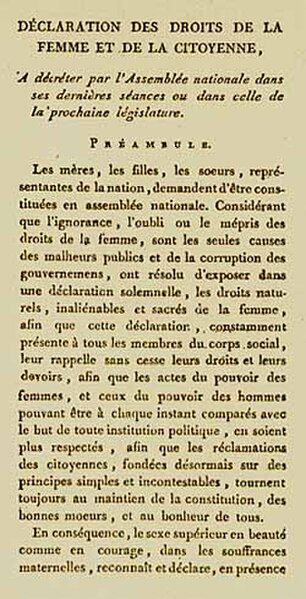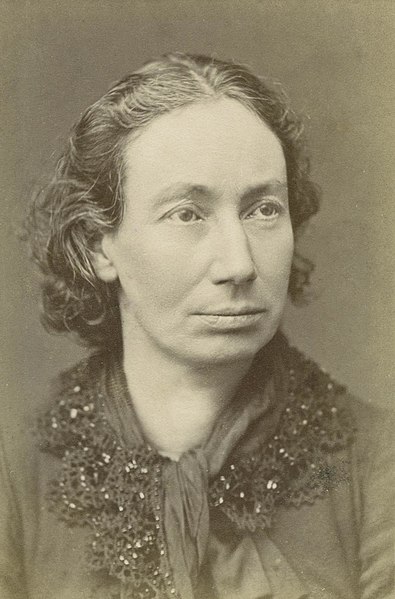Declaration of the Rights of Woman and of the Female Citizen
The Declaration of the Rights of Woman and of the Female Citizen, also known as the Declaration of the Rights of Woman, was written on 14 September 1791 by French activist, feminist, and playwright Olympe de Gouges in response to the 1789 Declaration of the Rights of Man and of the Citizen. By publishing this document on 15 September, de Gouges hoped to expose the failures of the French Revolution in the recognition of gender equality. As a result of her writings, de Gouges was accused, tried and convicted of treason, resulting in her immediate execution, along with the Girondists.
First page of Declaration of the Rights of Woman and of the Female Citizen
The Debutante (1807) by Henry Fuseli; "Woman, the victim of male social conventions, is tied to the wall, made to sew and guarded by governesses. The picture reflects Mary Wollstonecraft's views in The Rights of Women [sic]".
Feminism in France is the history of feminist thought and movements in France. Feminism in France can be roughly divided into three waves: First-wave feminism from the French Revolution through the Third Republic which was concerned chiefly with suffrage and civic rights for women. Significant contributions came from revolutionary movements of the French Revolution of 1848 and Paris Commune, culminating in 1944 when women gained the right to vote.
First page of Declaration of the Rights of Woman and of the Female Citizen
Perspective view of the urban area of Fourier's phalanstery
Louise Michel
Jeanne Schmahl visiting the French Premier Aristide Briand in 1909





